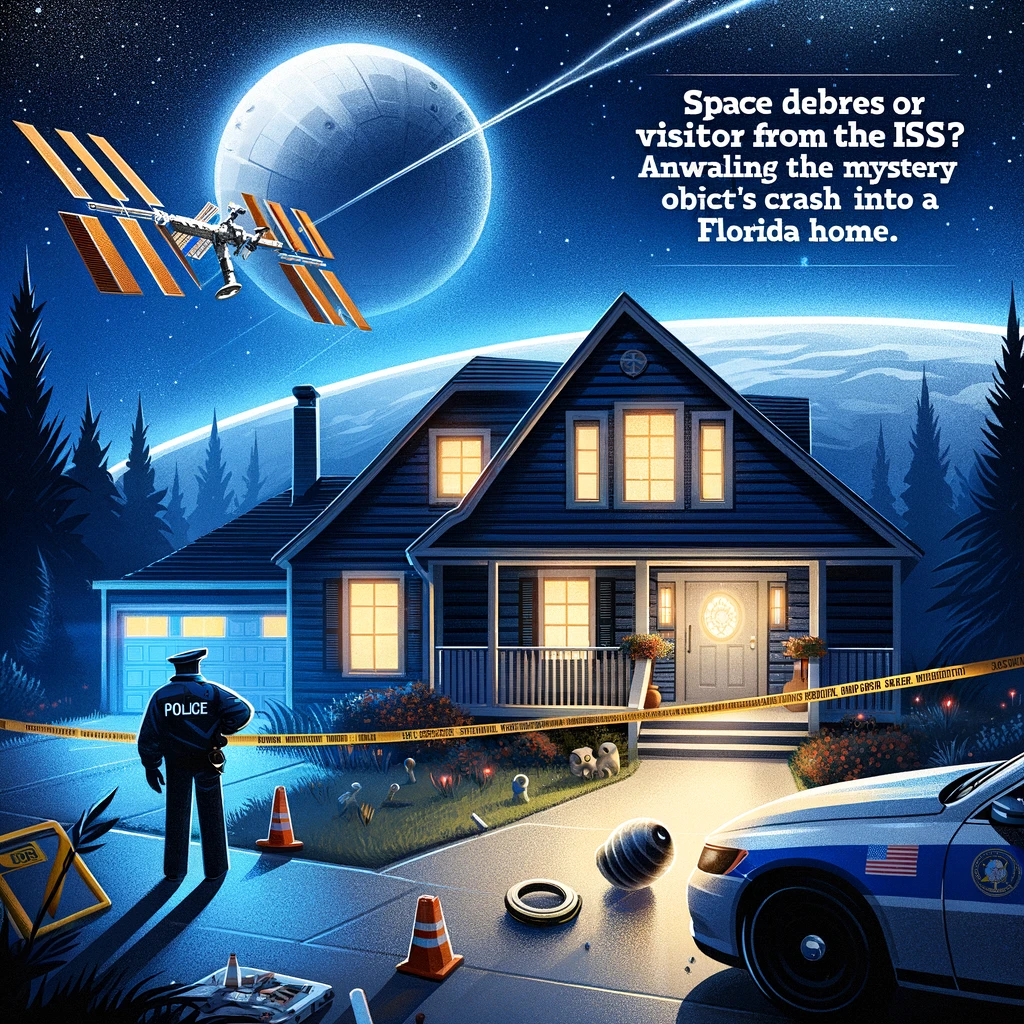
In a startling incident that captures the collision of the mundane with the marvels of space exploration, a 2-pound object recently crashed through the roof of a Florida man’s home, sparking widespread curiosity and intrigue. This event has not only drawn the attention of local authorities but has also prompted NASA to step in for a detailed analysis, raising the possibility that the object may have originated from the International Space Station (ISS). The peculiar nature of this occurrence offers a rare glimpse into the complexities and unexpected consequences of space operations and their impact on Earth.
The homeowner’s discovery of the object amidst the debris of his damaged roof immediately set off a series of speculations and investigations. The object’s characteristics and the trajectory of its descent suggest that it could be a piece of space debris, remnants from the vast expanse of human-made objects that orbit our planet. These objects range from spent rocket stages and defunct satellites to smaller fragments that have detached from operational spacecraft. NASA’s involvement in examining the object underscores the seriousness with which space agencies treat potential space debris, given the risks they pose not only to space missions but also to people and property on the ground.
The International Space Station, a marvel of international cooperation and engineering, orbits Earth at an altitude of approximately 400 kilometers (about 250 miles), traveling at a speed of roughly 28,000 kilometers per hour (about 17,500 miles per hour). While the ISS itself is meticulously managed to minimize the risk of releasing debris, the complex nature of space operations means that accidents and anomalies can occur. Over the decades, the space surrounding Earth has become increasingly congested with debris, a testament to humanity’s expanding footprint in space. As such, incidents like the one in Florida highlight the growing need for effective space traffic management and debris mitigation strategies.
The implications of space debris falling to Earth are manifold, ranging from potential safety hazards to legal and environmental concerns. Each incident serves as a reminder of the dual nature of humanity’s space endeavors: while they represent our greatest technological achievements, they also challenge us to consider the sustainability of our activities beyond our planet. The analysis by NASA will likely focus on determining the origin of the object, assessing whether it indeed came from the ISS or another source, and understanding how such incidents can be prevented in the future.
This event has also captured the public’s imagination, serving as a tangible connection between the often distant concept of space exploration and the reality of our everyday lives. For the homeowner and the wider community, the crash has prompted a mixture of concern, curiosity, and fascination with the vast unknown of space. It also raises awareness about the broader challenges facing global space governance, including the management of space traffic and the mitigation of space debris, which have become critical issues as more countries and private entities venture into space.
In conclusion, the crash of a 2-pound object through a Florida man’s roof, potentially originating from the International Space Station, represents a confluence of the ordinary and the extraordinary. As NASA conducts its analysis, the incident not only sheds light on the practical challenges of space exploration but also ignites a broader discussion on the stewardship of space as humanity’s final frontier. The ongoing investigation and its findings will undoubtedly contribute to the evolving narrative of our journey among the stars, reminding us of the need to navigate this odyssey with caution, responsibility, and an eye toward the future.